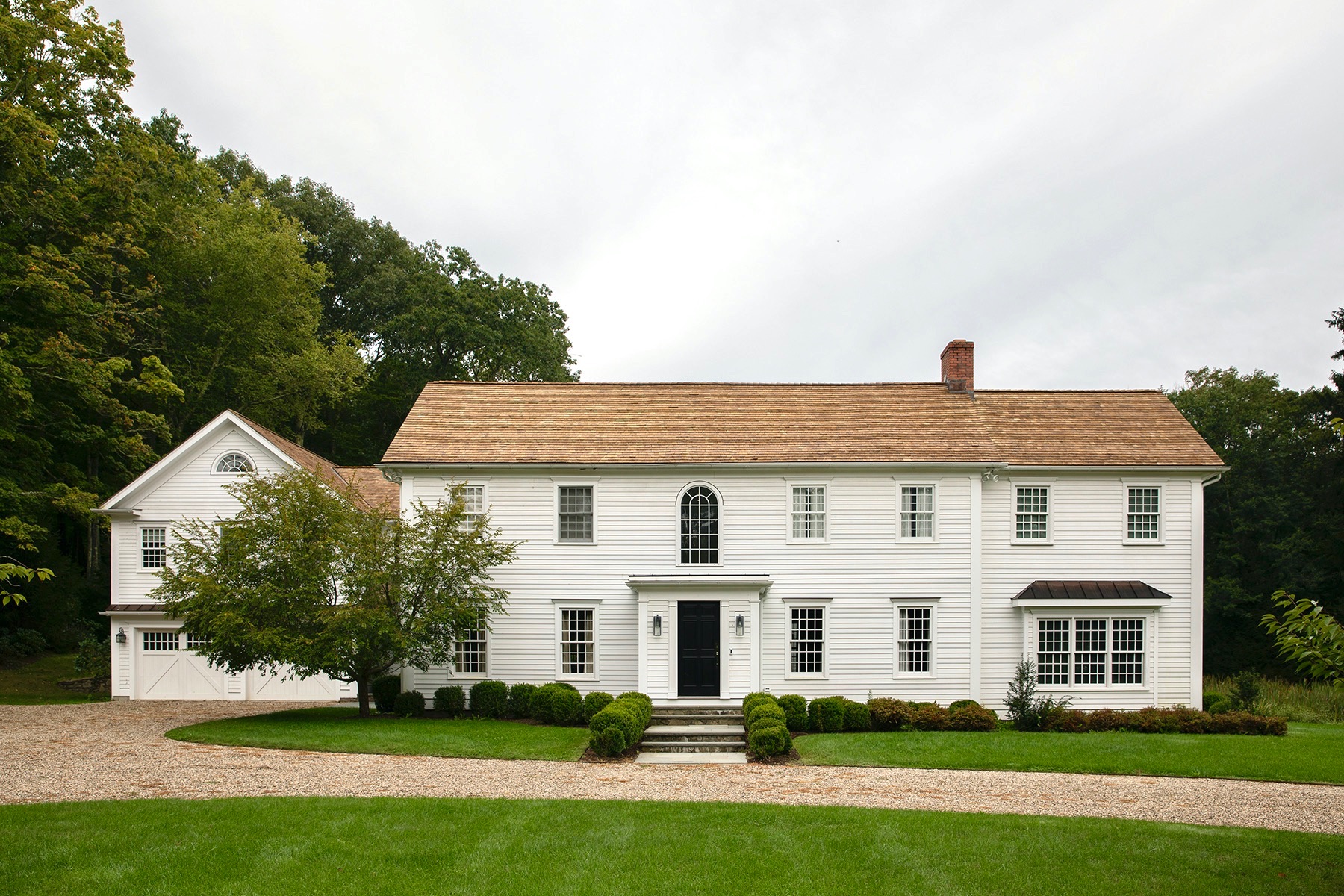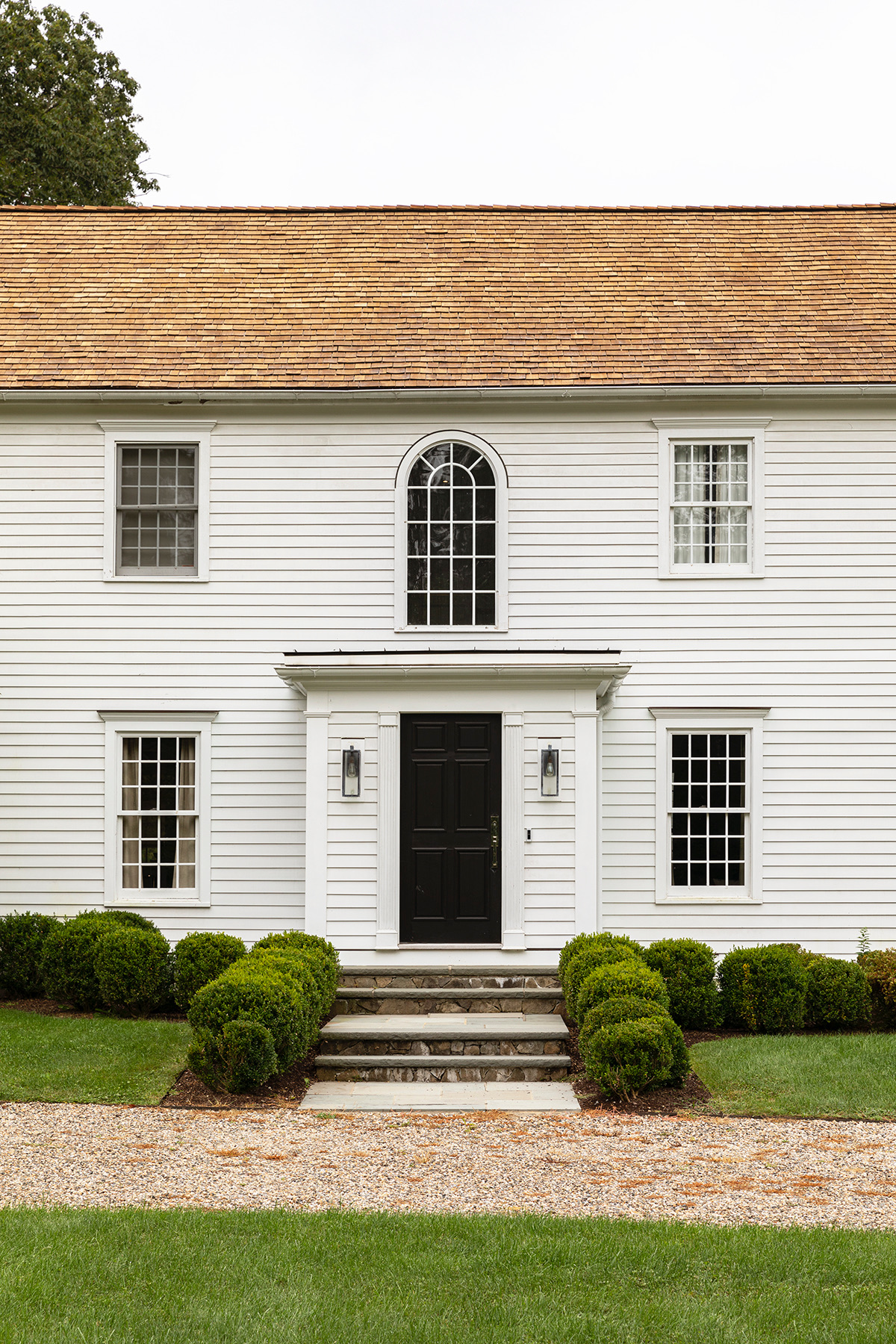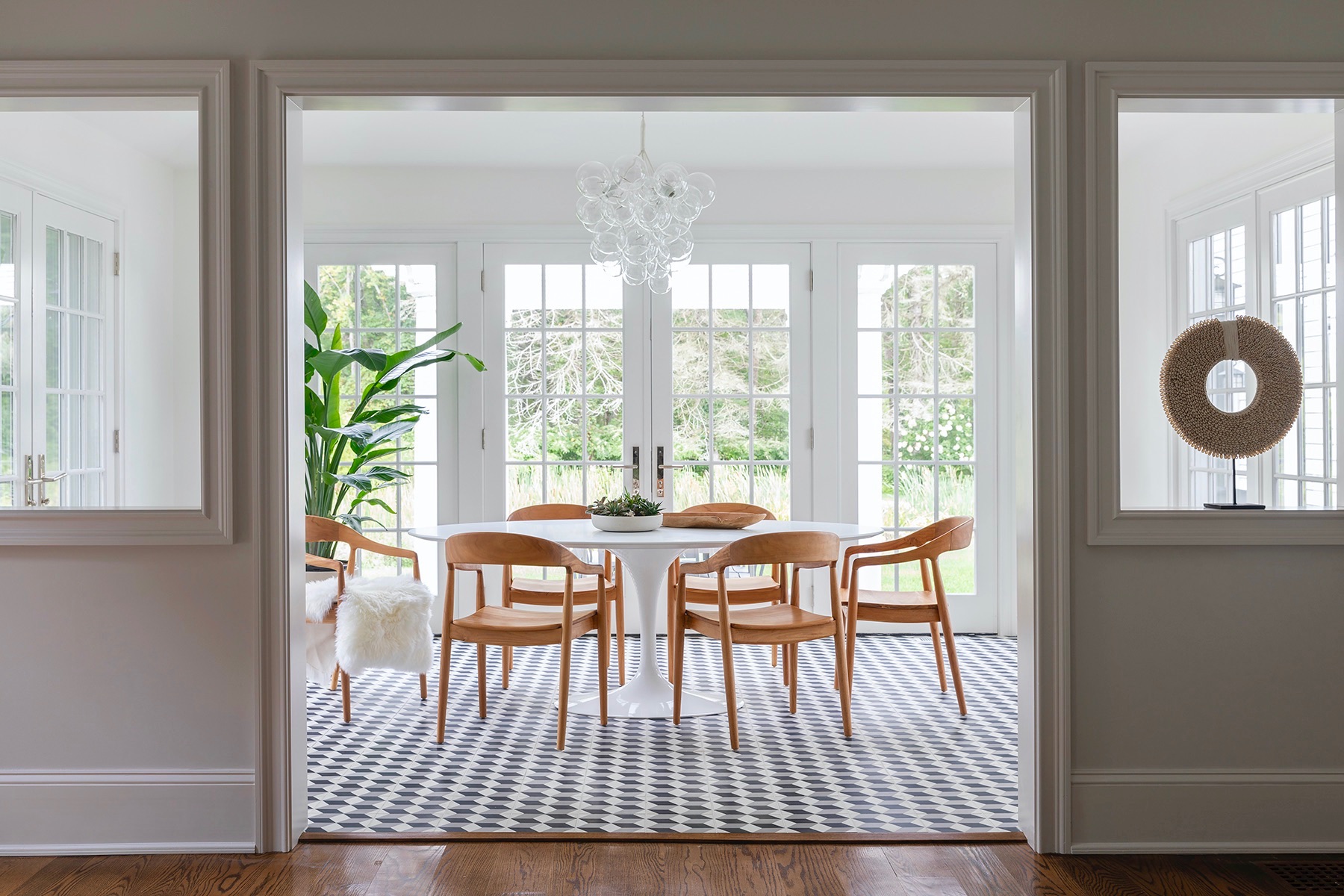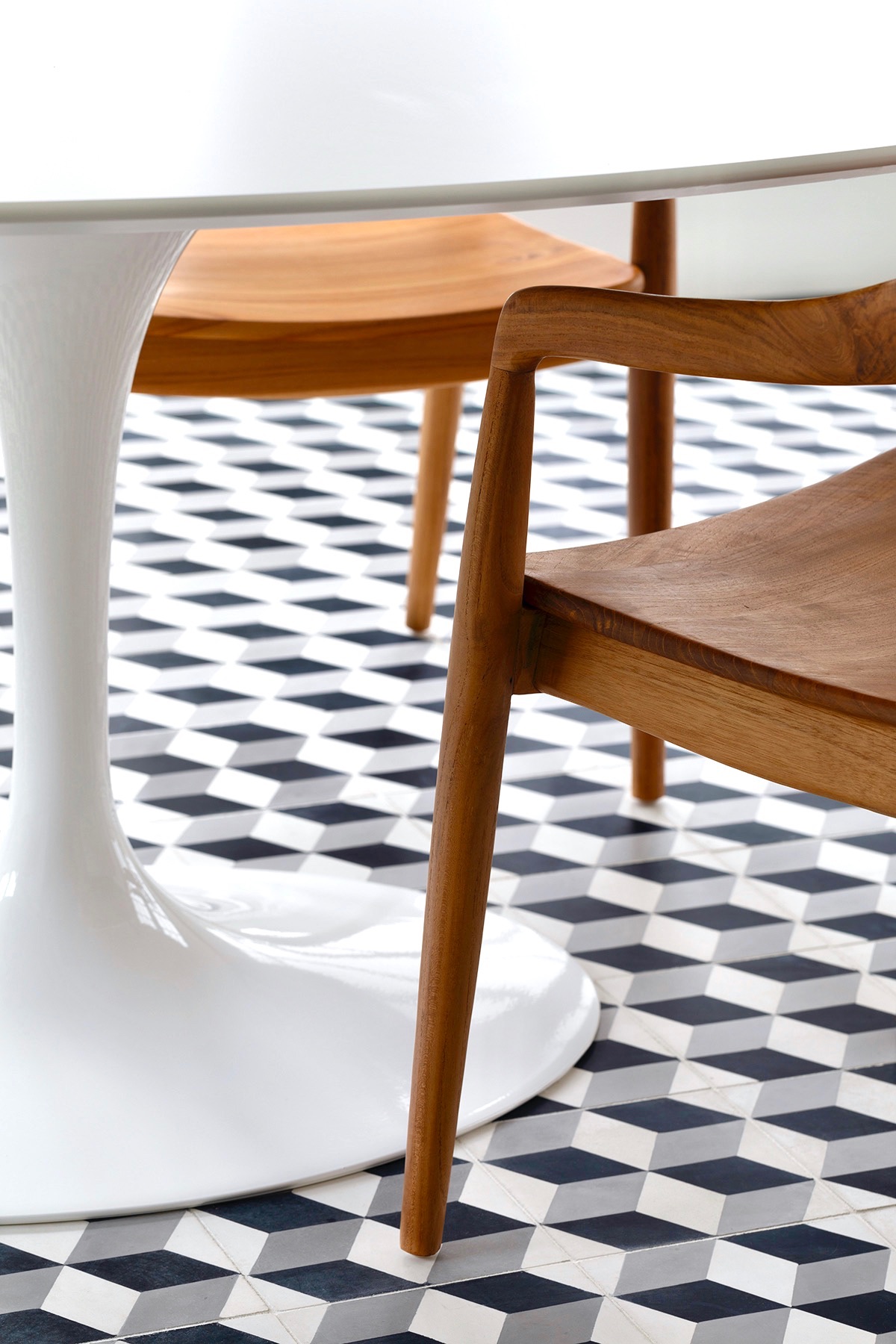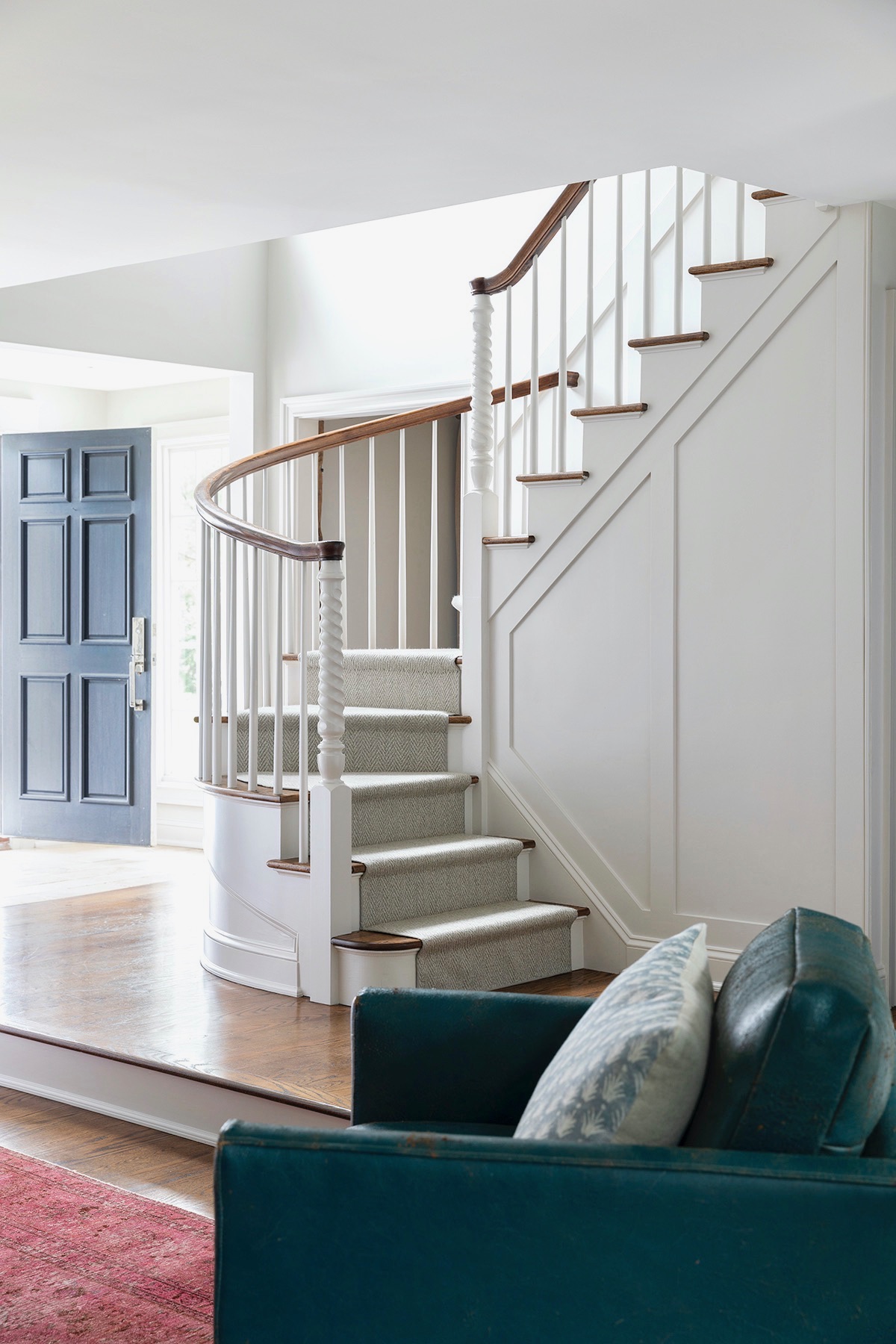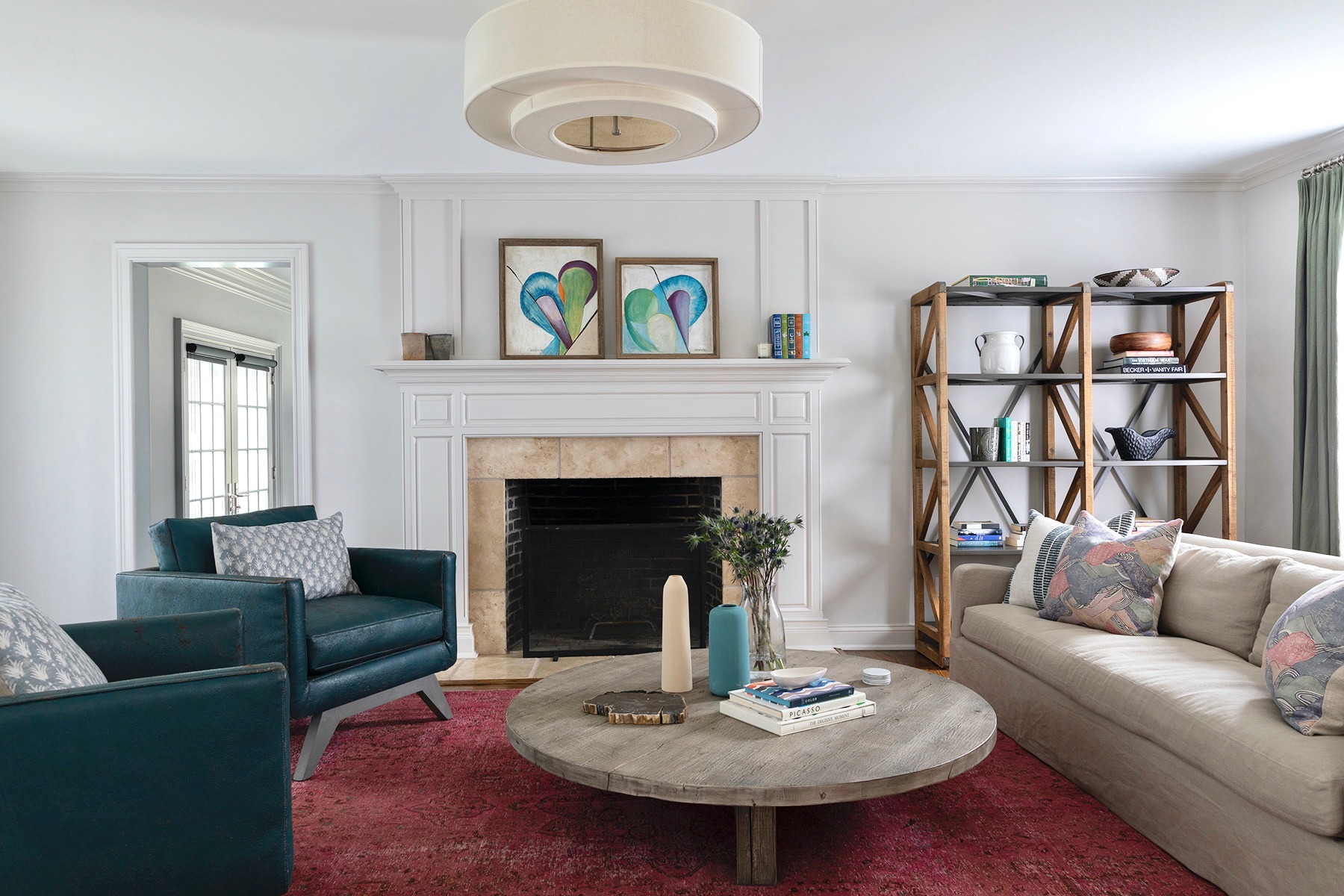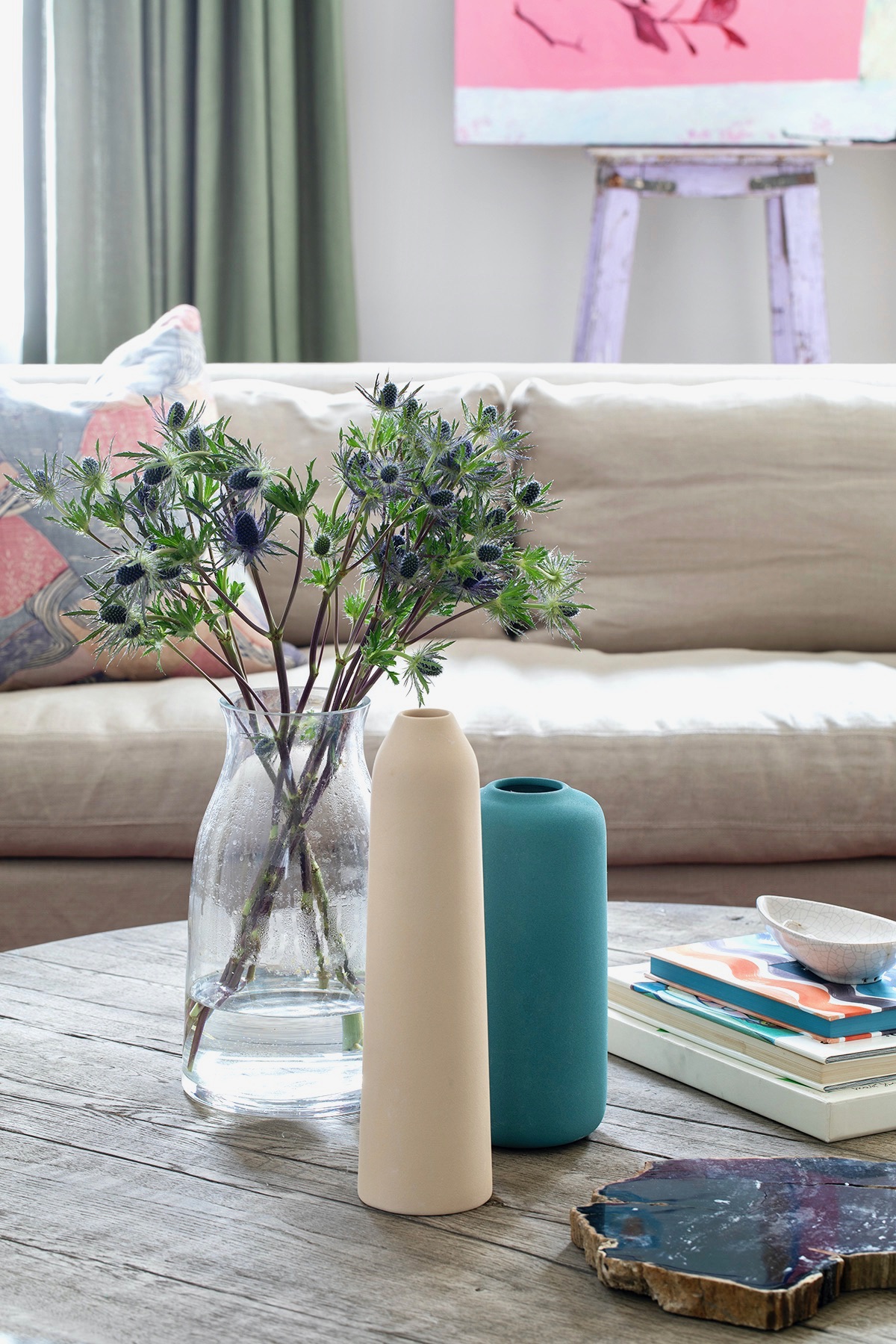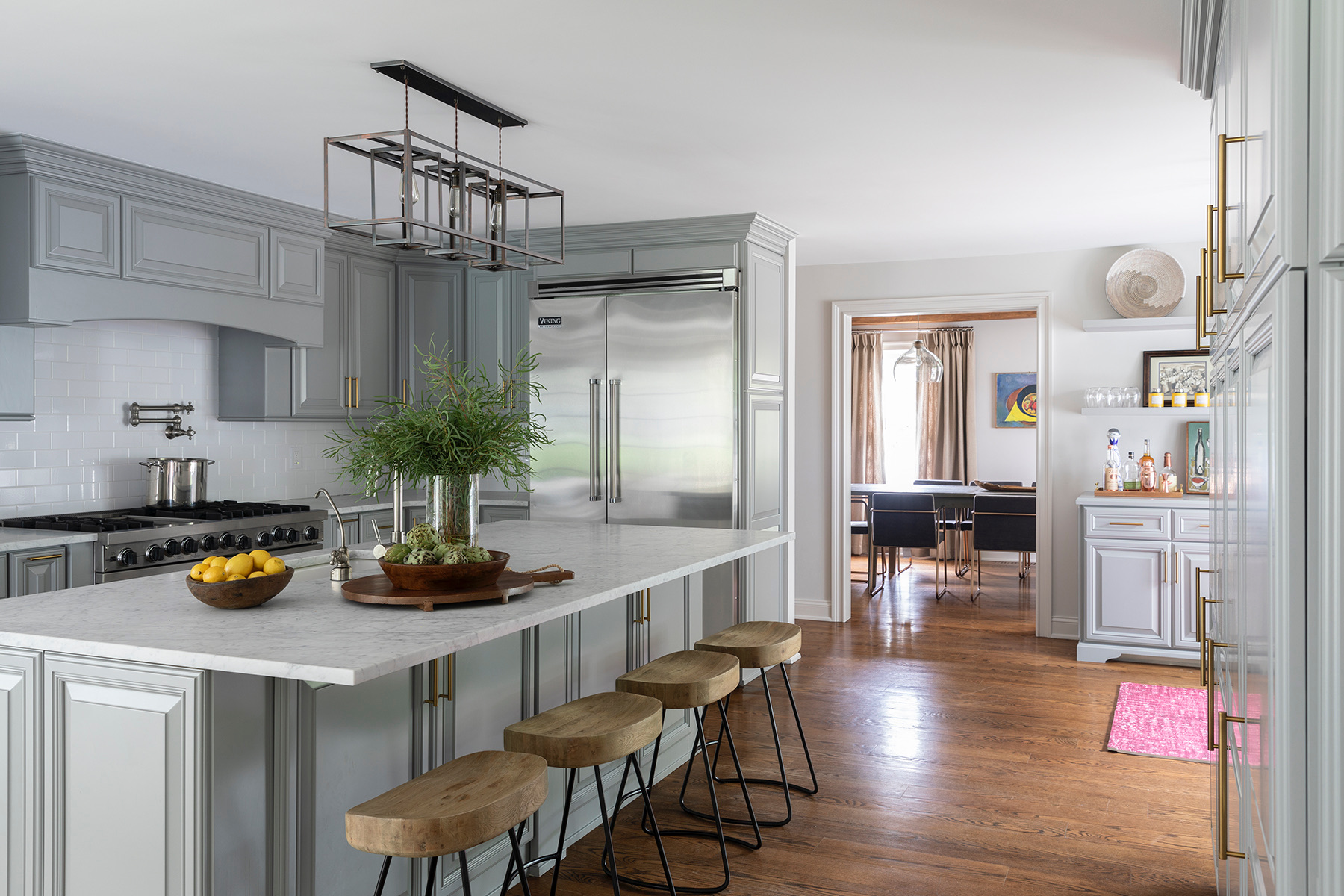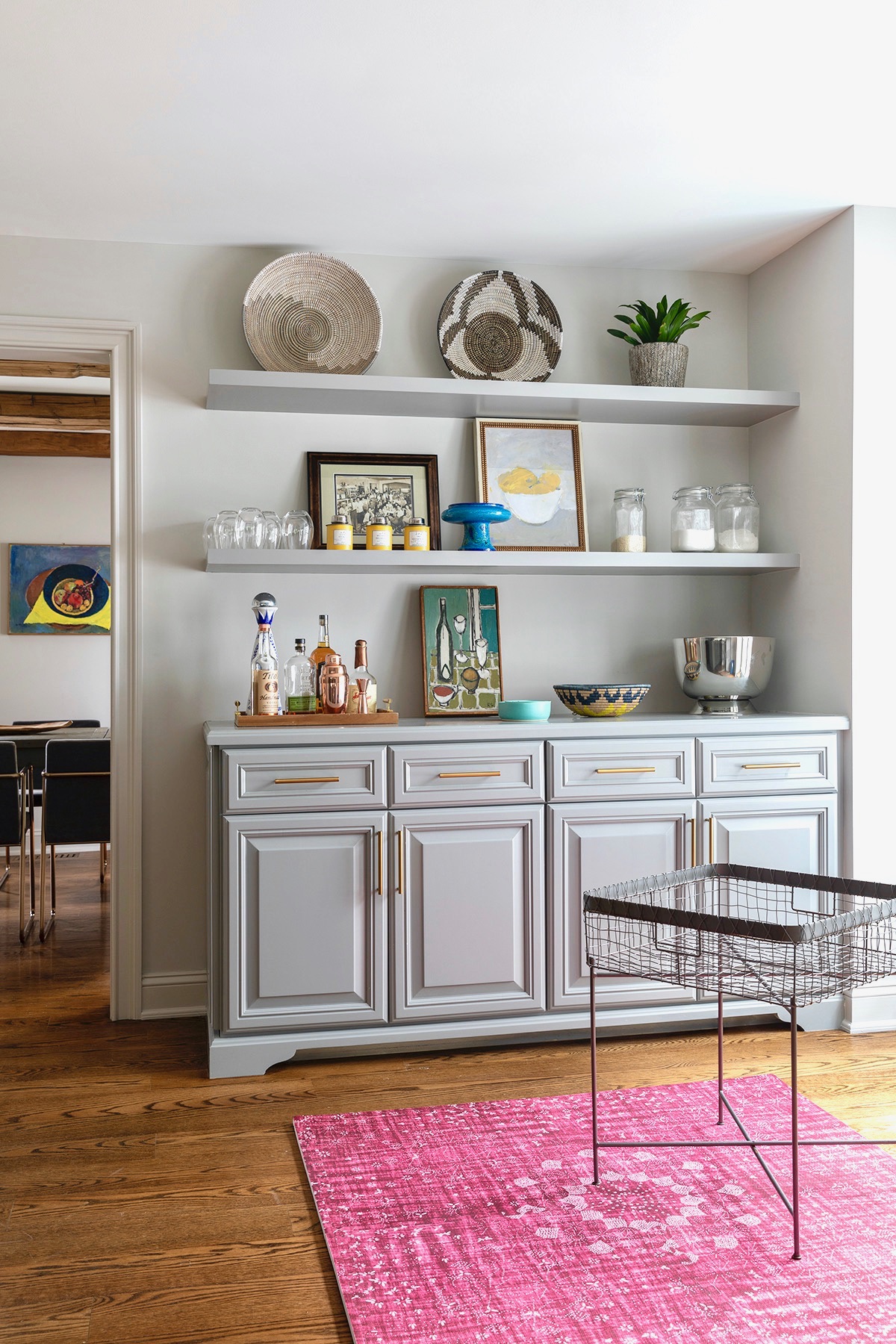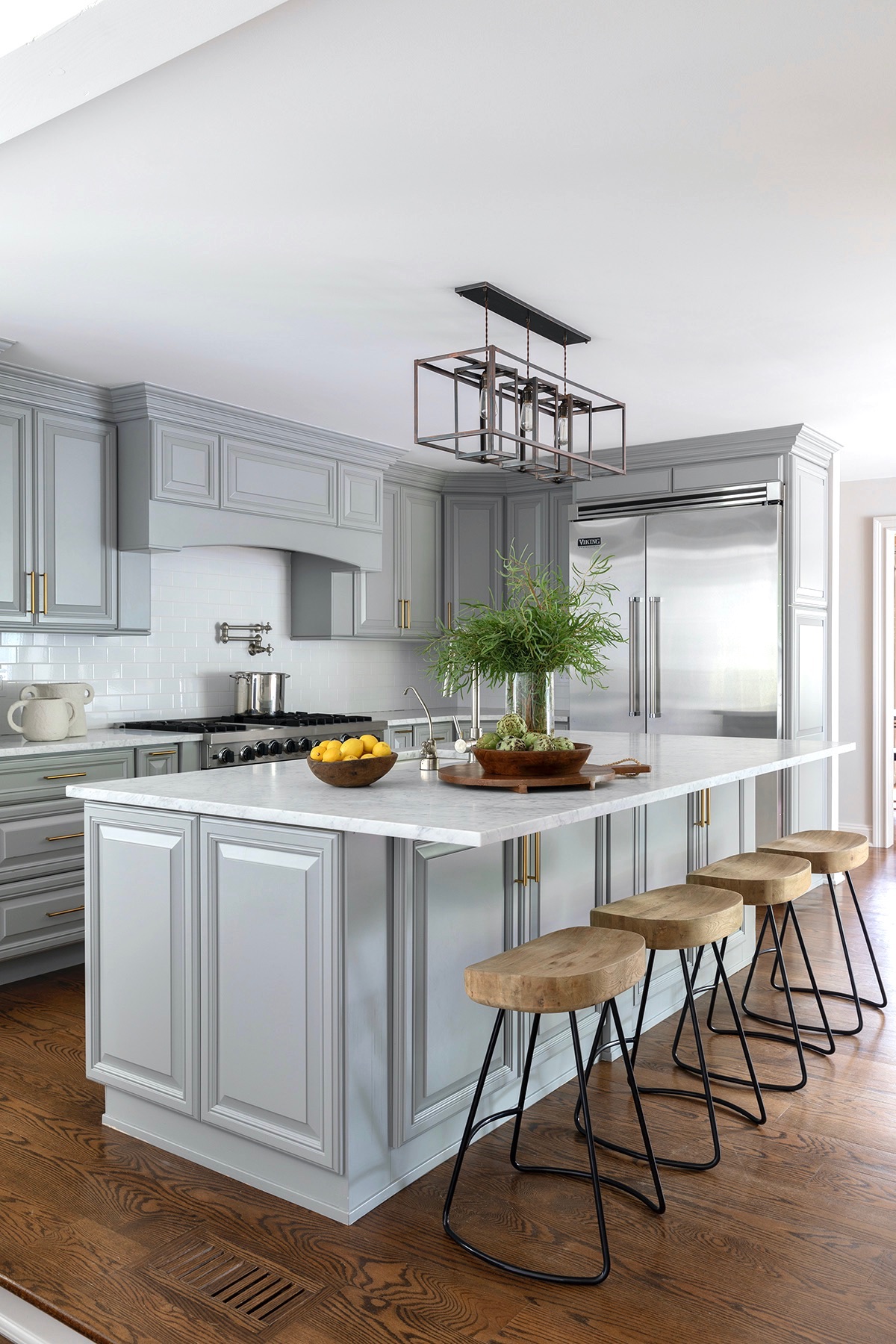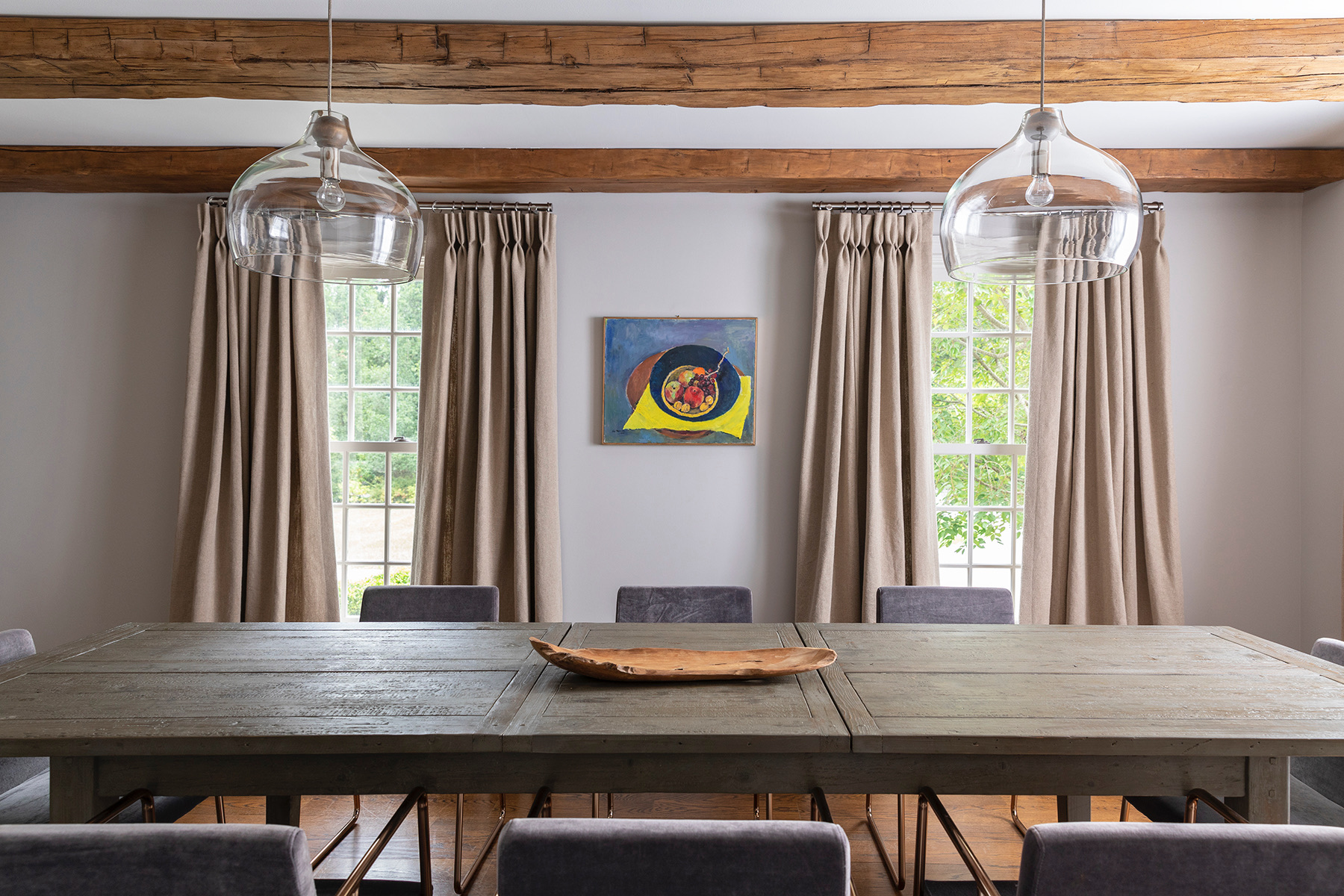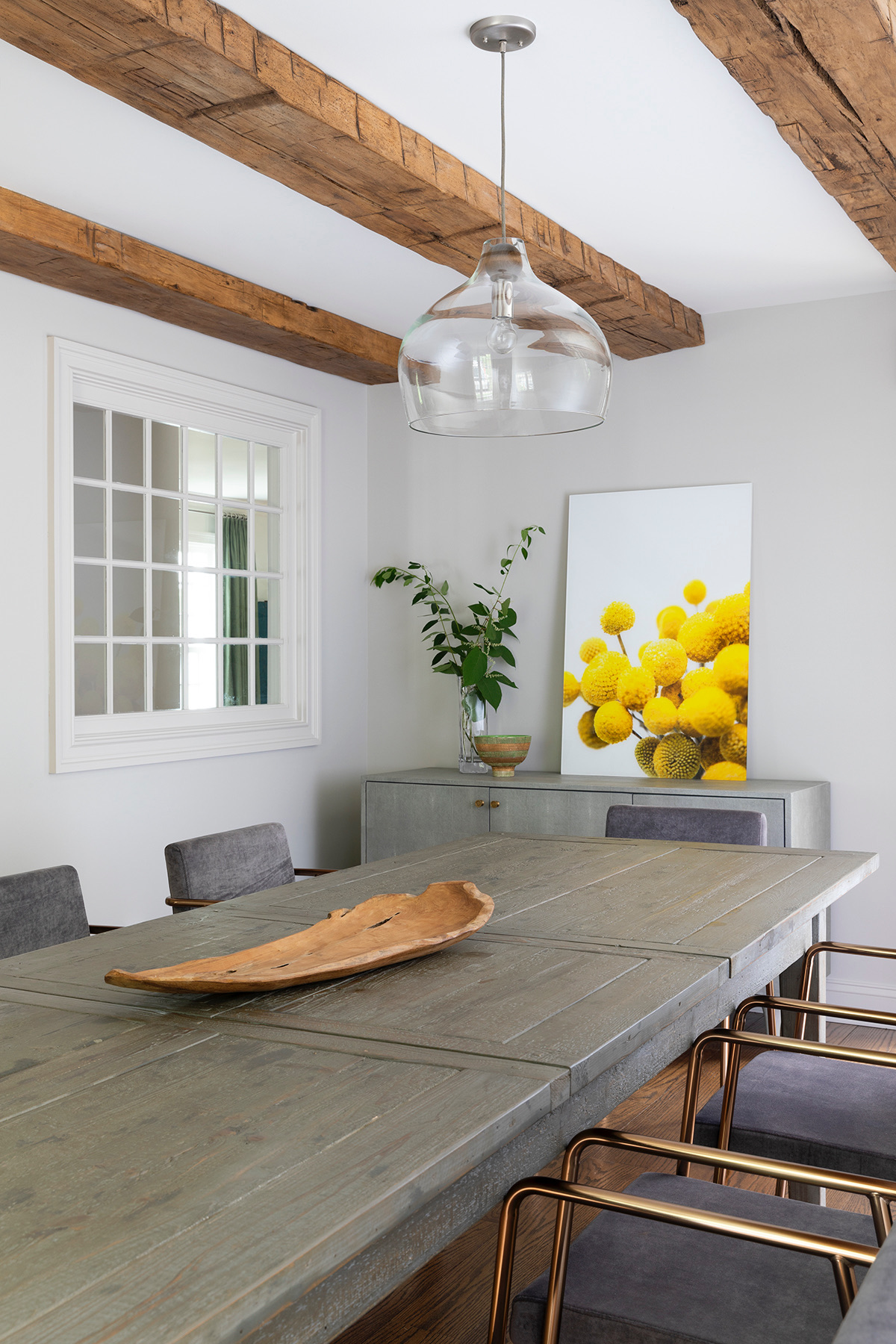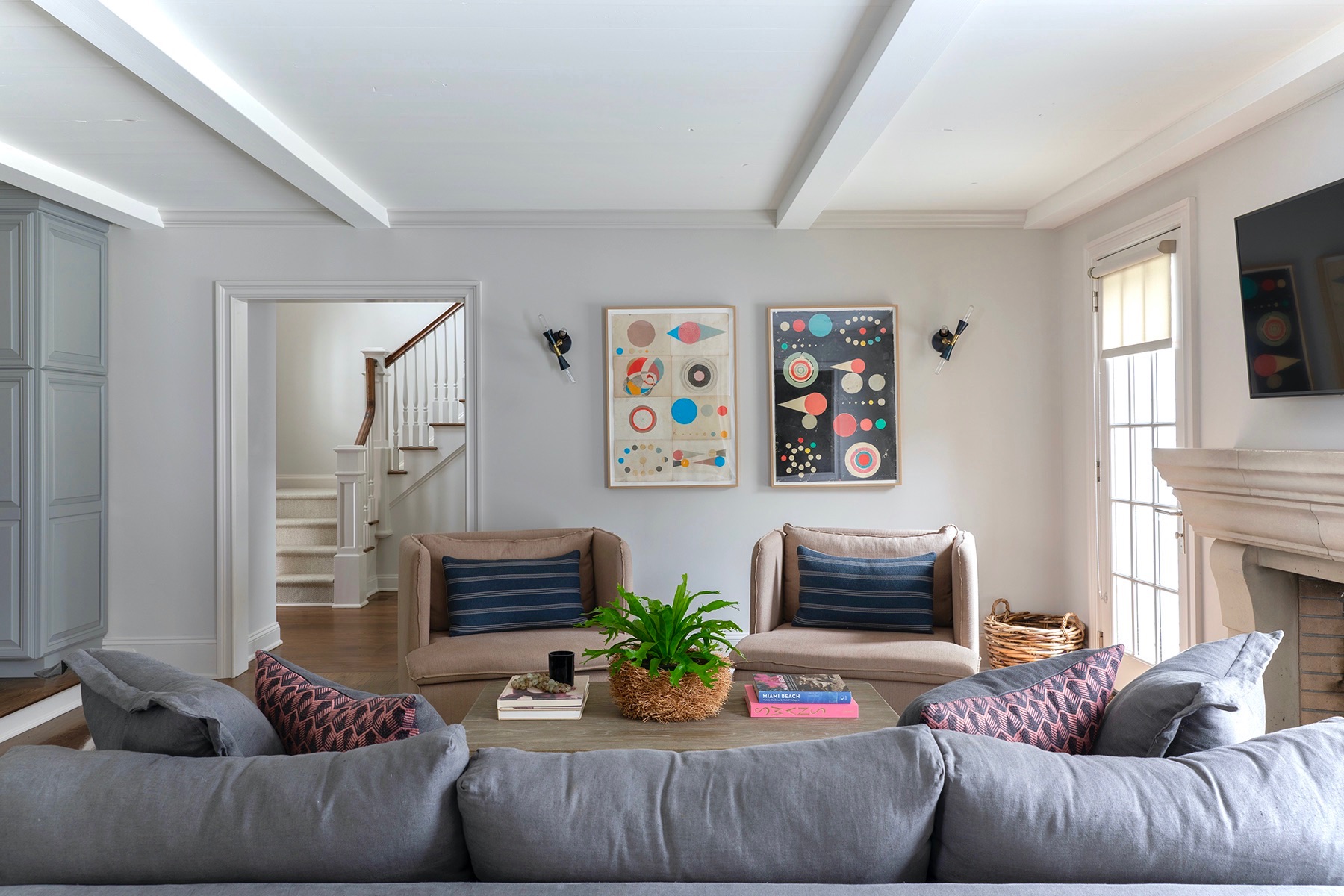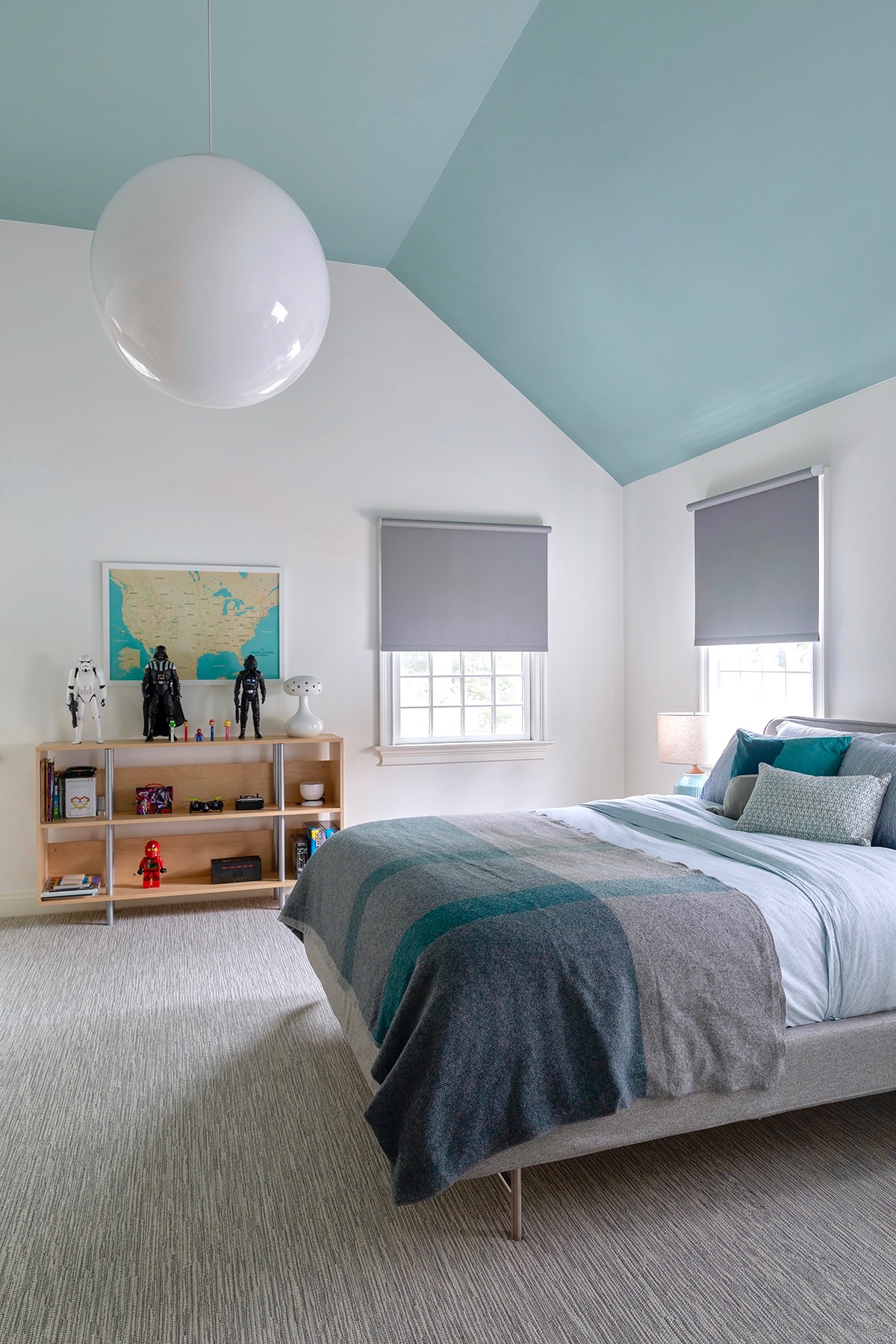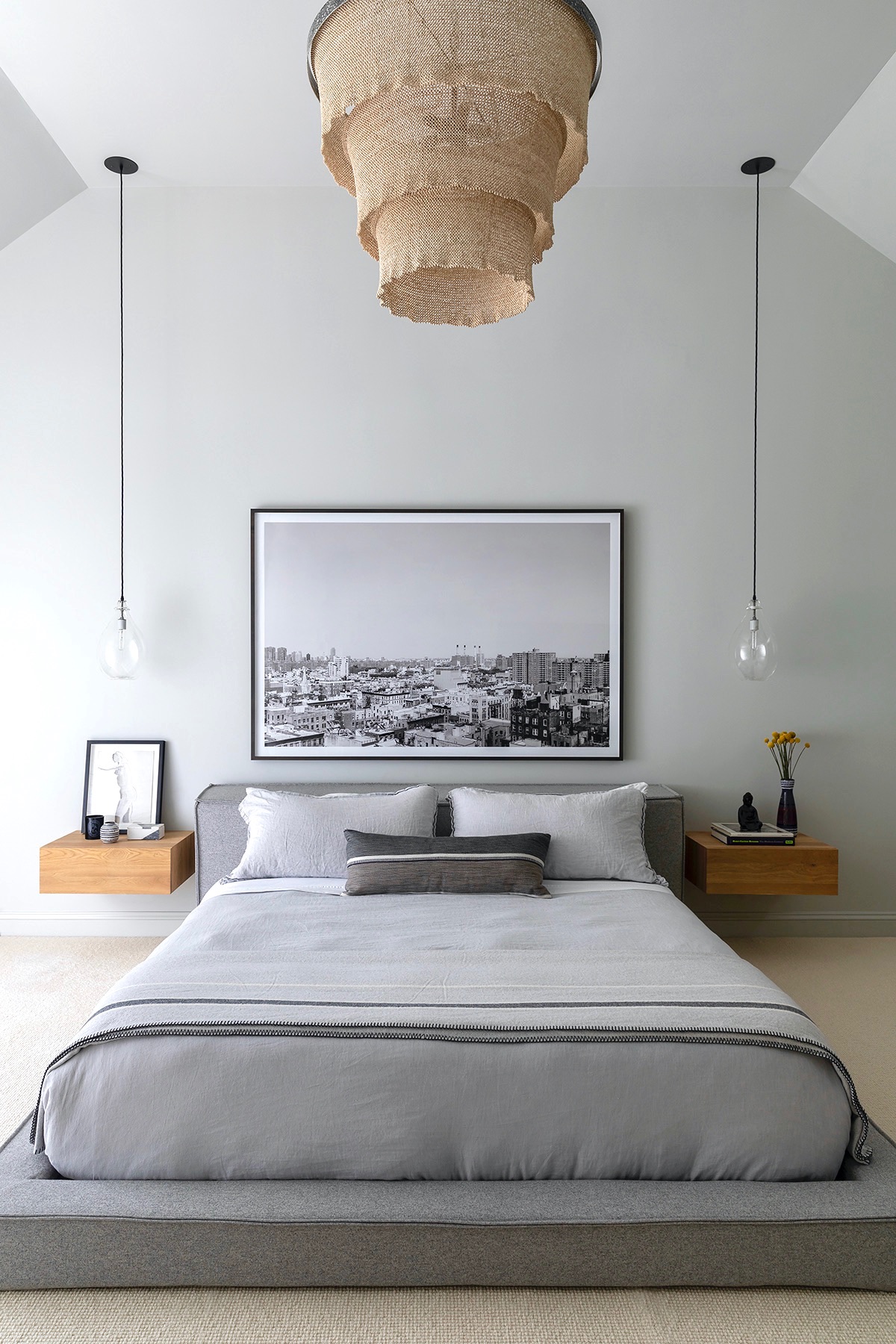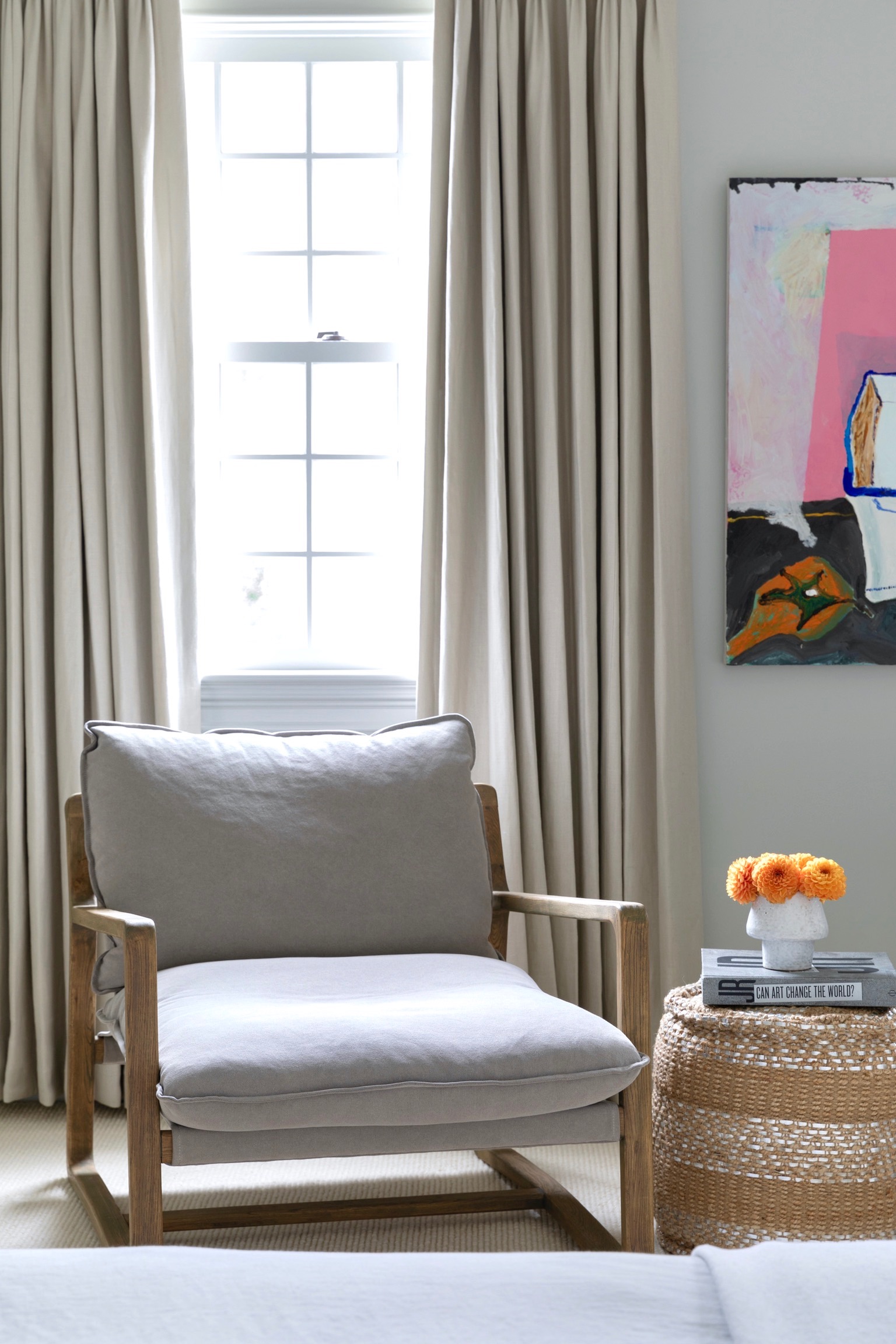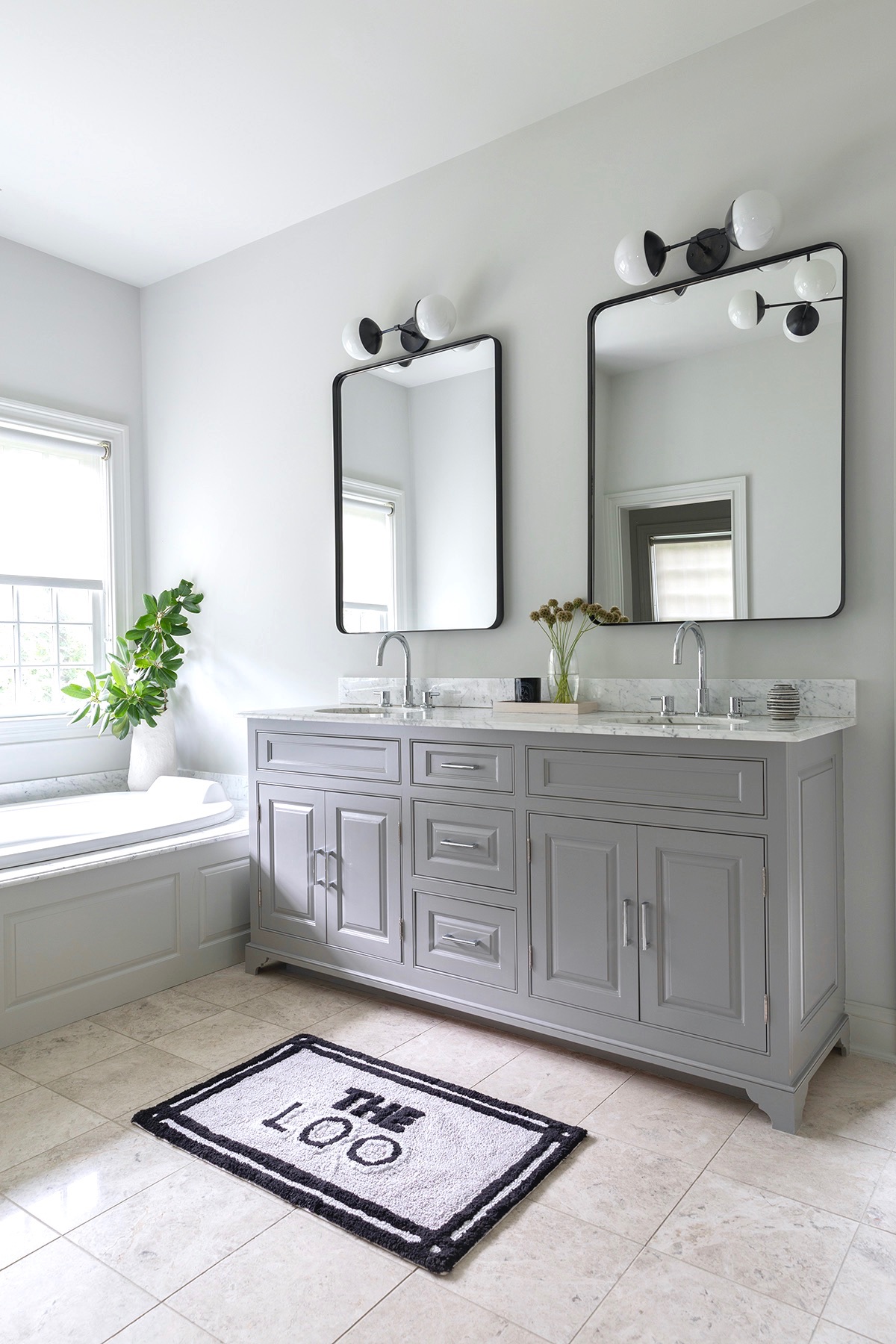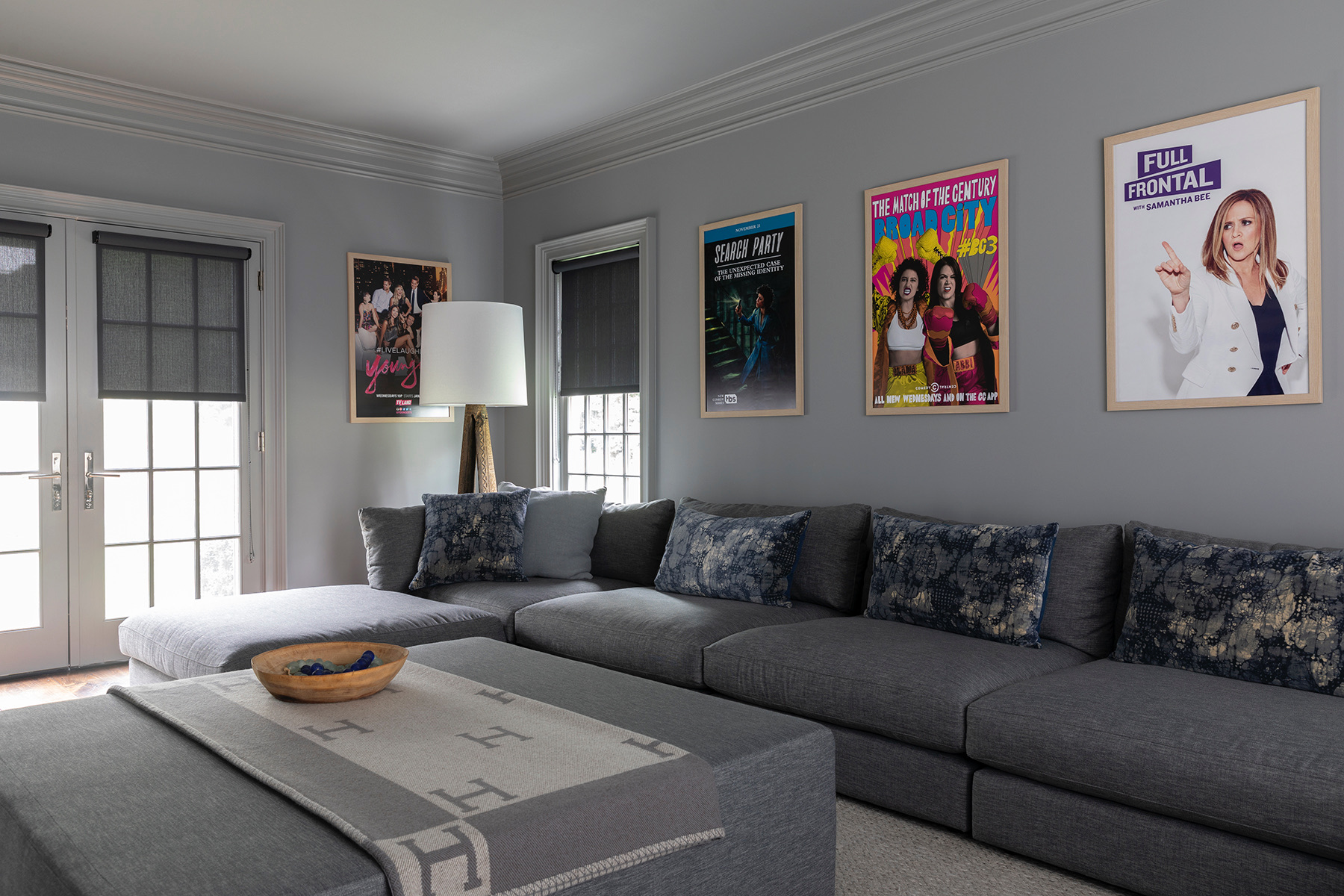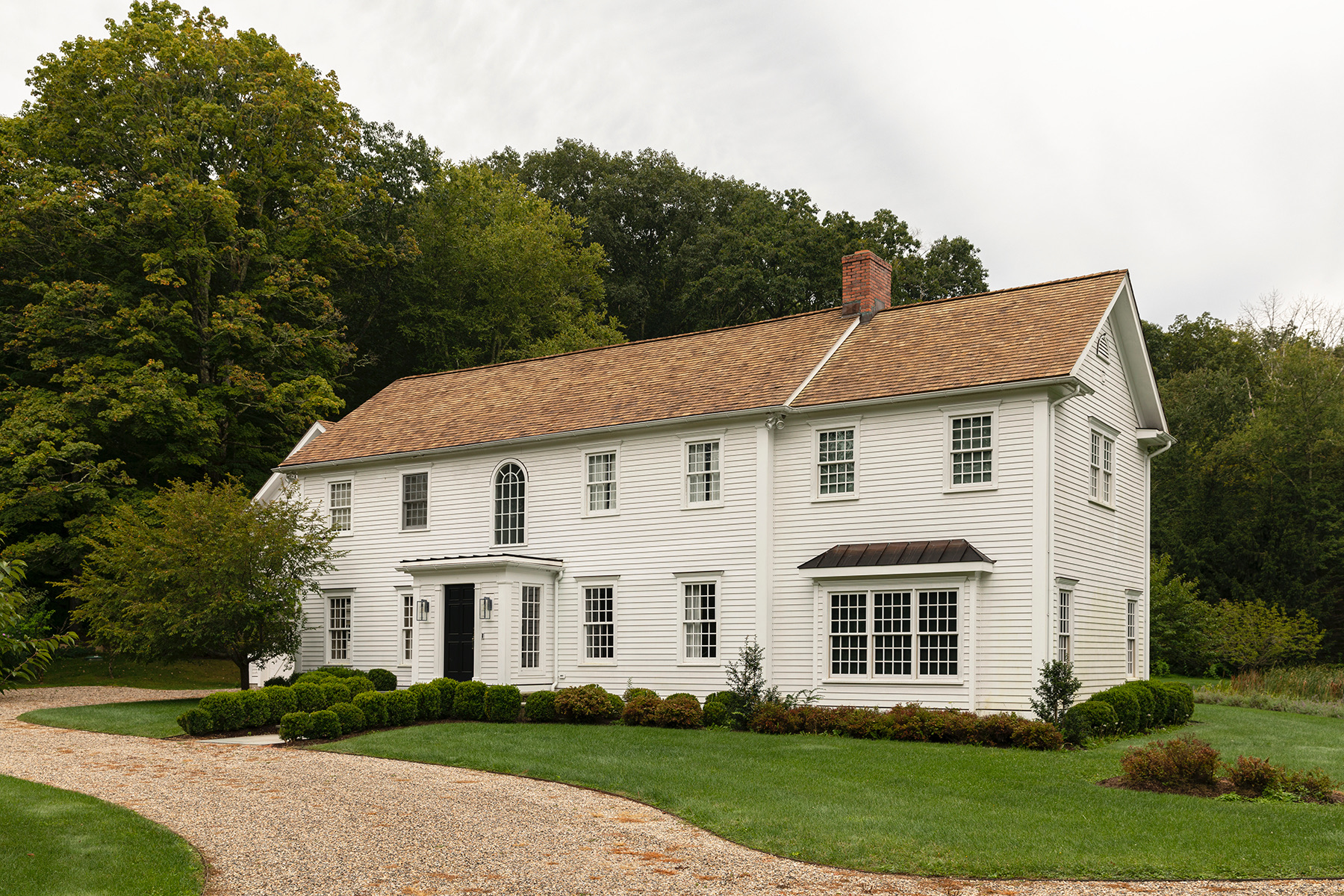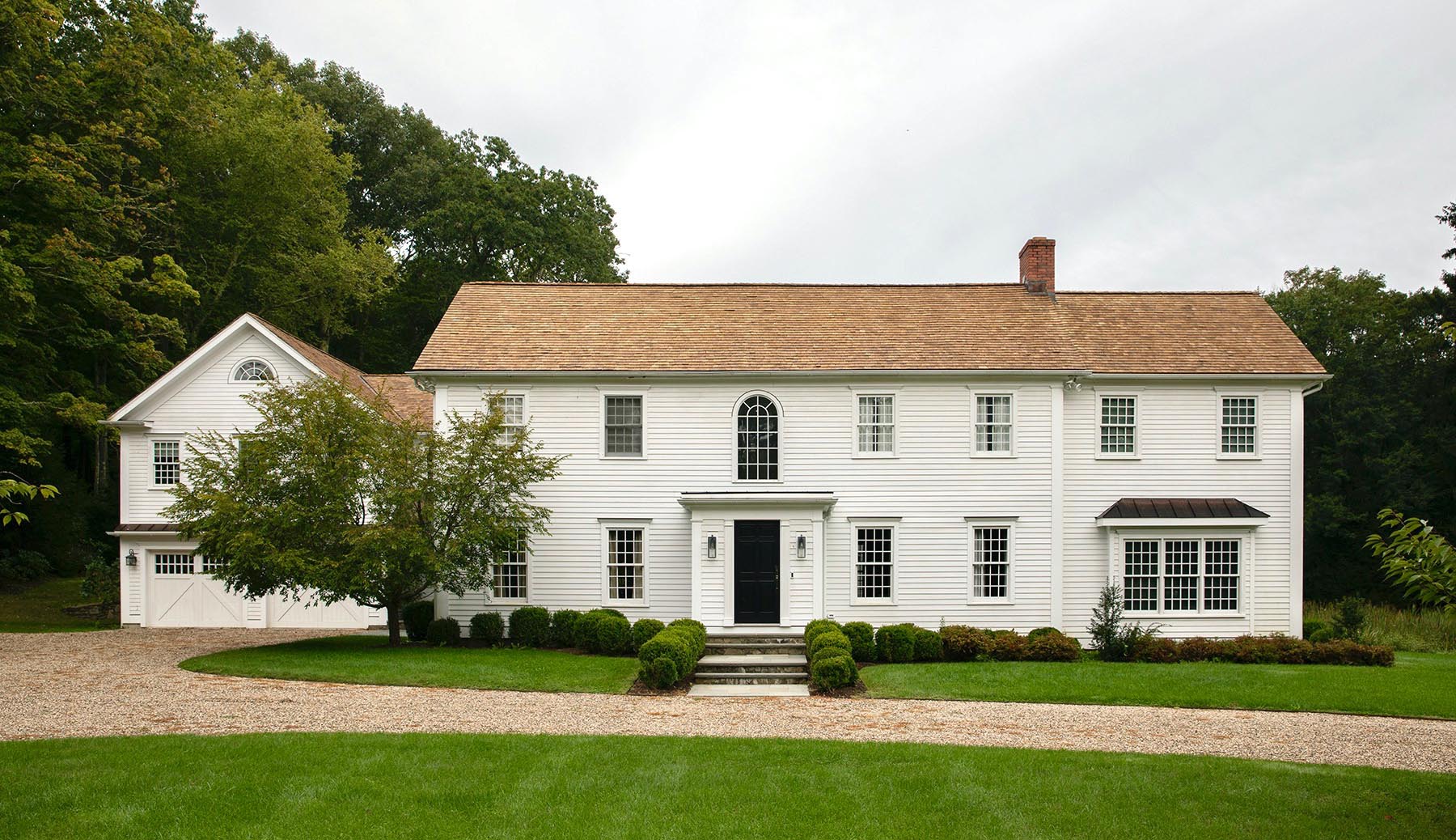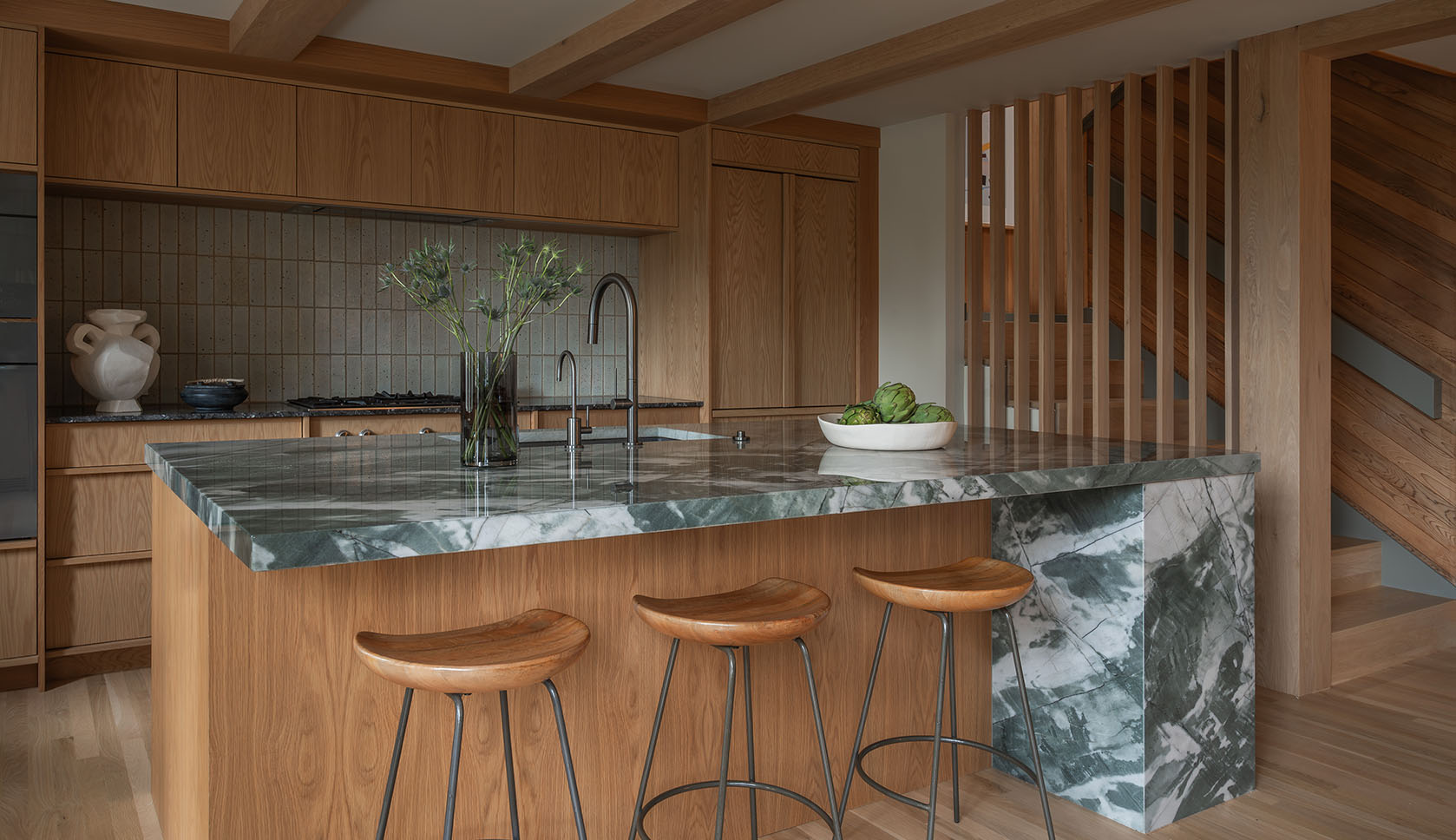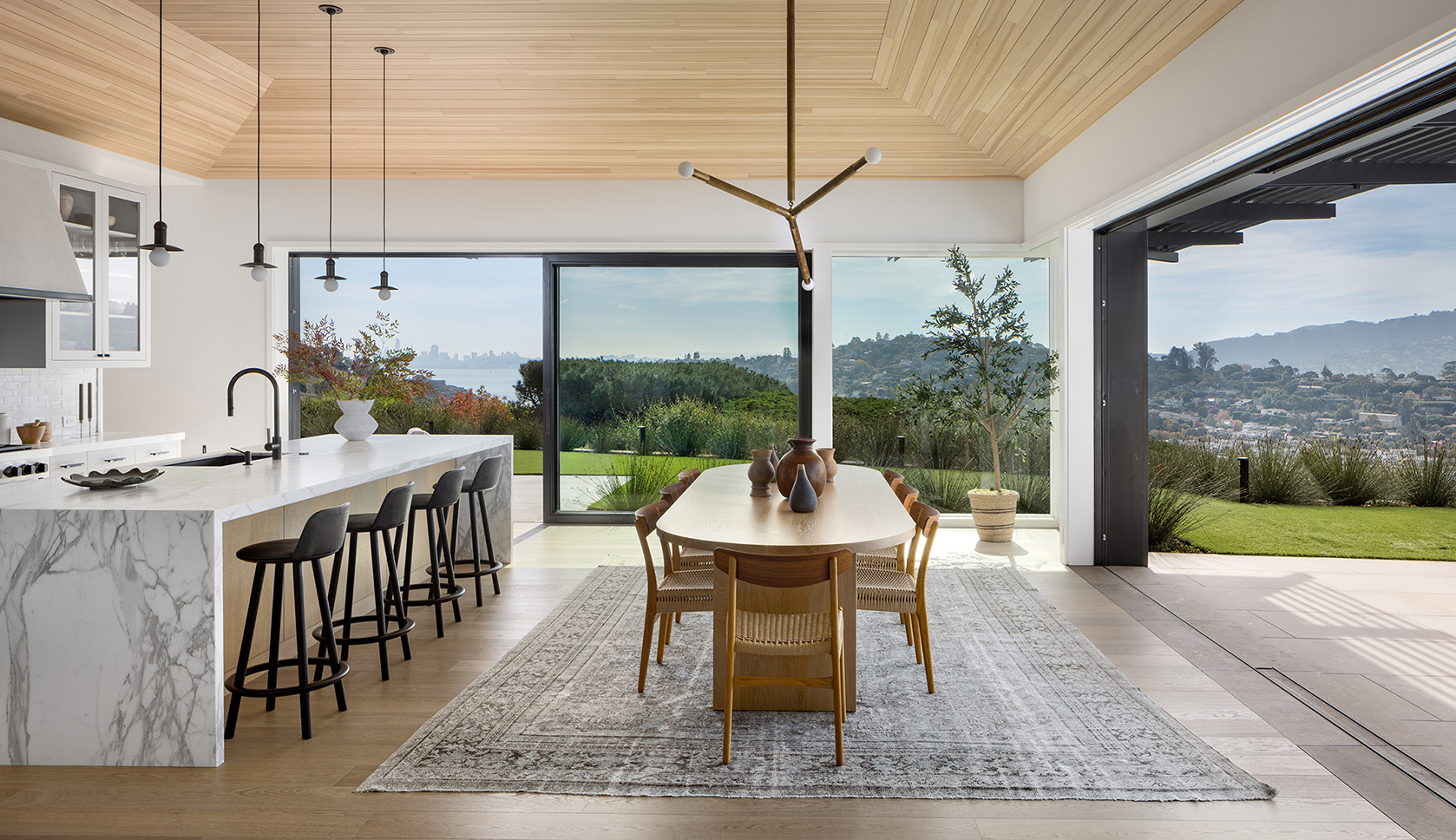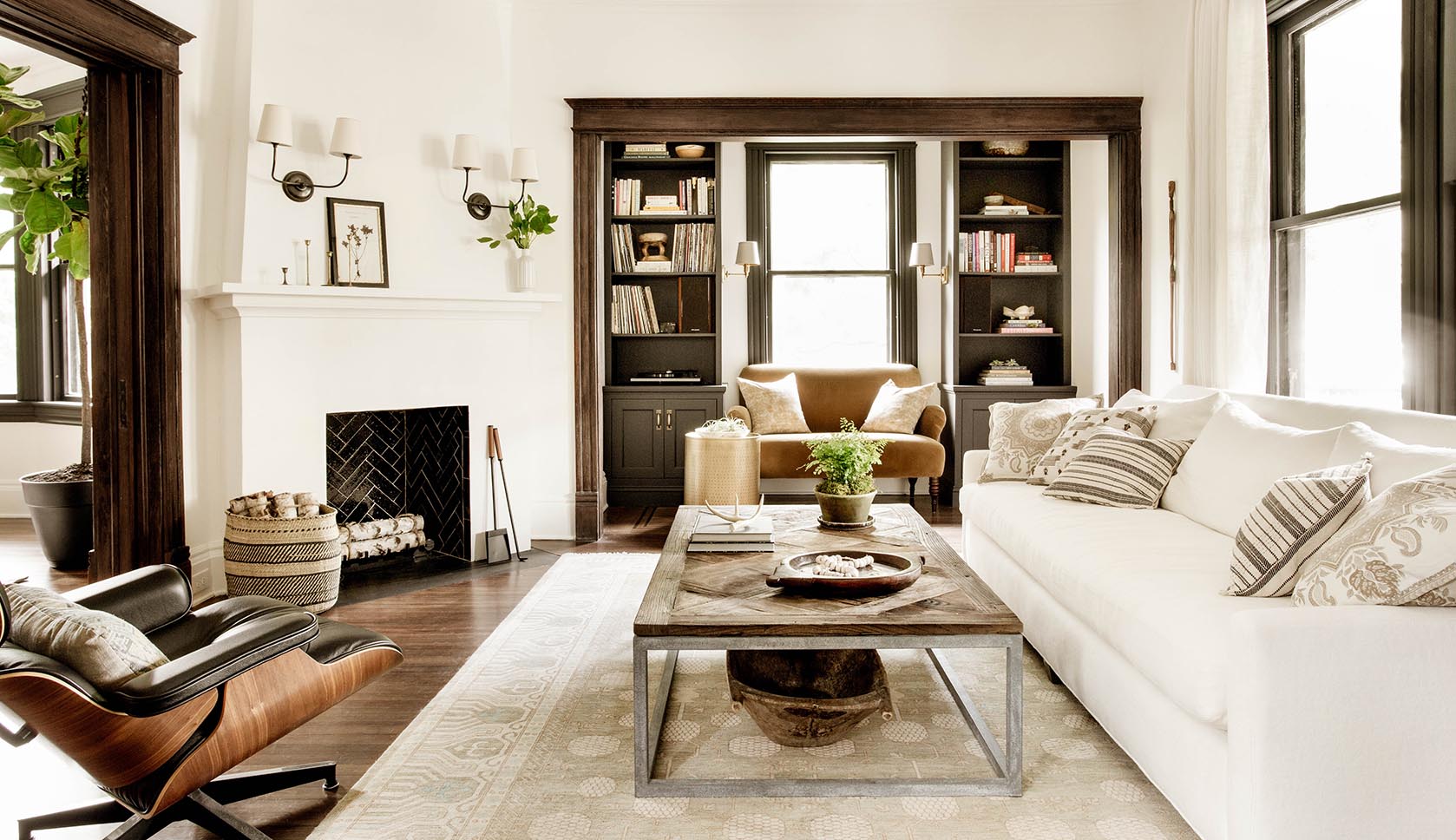Located north of New York City in a bucolic town called Redding, Connecticut, this striking estate was in need of a refresh. The homeowners have incredibly busy work schedules, producing top television shows like Emily in Paris, Broad City, Younger, and more. They called on Denise Davies of D2 Interieurs to finish the home. They definitely had a vision–eclectic leaning towards modern–and once Denise understood their aesthetic, designing the space came very easily. The project took around 5 months and the family was so thrilled, Denise will be designing their townhouse in Brooklyn. Read on to learn more about this eclectic estate.
Tell us a bit about this home. Where is it located and how did the location affect the design, if at all?
The house is a quintessential New England Estate, built in 1925. The home has exposed beams, cathedral ceilings, wide planked hardwood floors, and two fireplaces. You walk into the foyer which leads to a sunken family room and den. The backyard is beautiful with gardens and a heated pool, patio, pergola, pond, circular river stone driveway, wood and copper roof, and a separate artist studio. The house gets a lot of natural light. It’s perfect for this young family as a quick getaway because it’s only fifty miles from New York City where they have a permanent address and also work.
We’d love to know a bit more about the clients! What can you tell us about them?
This second home was purchased by Tony Hernandez and Lilly Burns (who is the daughter of renowned documentary film maker Ken Burns) located in Redding, CT. It is used as escape from their busy life of running an uber successful development and production company, Jax Media (they are responsible for shows like Emily In Paris, Odd Mom Out, and Inside Amy Schumer). These busy media moguls are also parents to a boy named Jax and a girl named Lou.
The home was a ‘diamond in the rough.’ What are some of the ways you brought it back to its original splendor?
The Burns’s preferred aesthetic for this house was a clean, modern one, but with soul. They wanted a home whose soul reflected the bones of the house, that would remain true to the style of the house, which dates from 1925. I chose products and furnishings with warmth and natural, organic patina. I also kept the palette neutral throughout to allow every piece of art and accessory to stand out, especially light fixtures.
The lighting plays a big part in the space. Tell us a bit about some of your selections.
Whenever possible, I introduce three sources of lighting—for issues of function and decoration. Every room in the home features a notable, even sculptural, lighting fixture, especially on the ceilings of the master bedroom, dining room, living room, and over the kitchen island. You can have too many stars in a room, so she tries to limit it to the lighting element.
This project concluded with a meaningful photoshoot. Could you tell us a bit about what the photos of this home mean to you?
The photographer, George Ross, was a friend and a colleague. Around 7 months after the photoshoot, he sadly passed away of Covid. This was the last project we worked on together. It is a tragedy and he will be missed.
